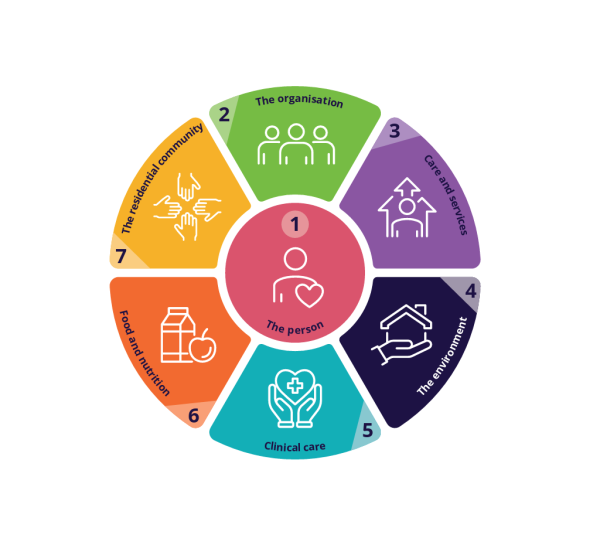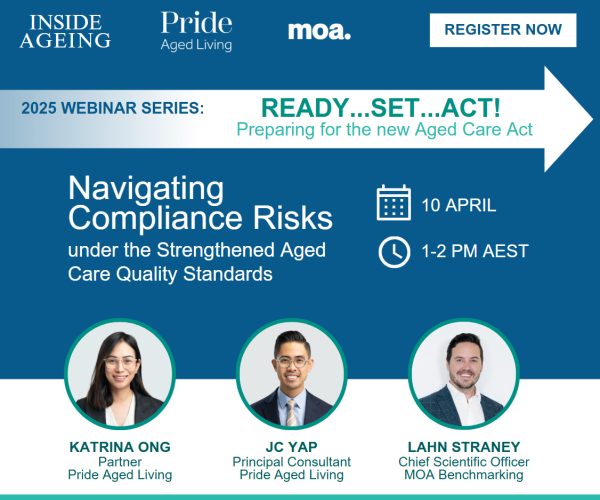2023 vs 2025: Key Changes in Strengthened Quality Standards Drafts

With the Strengthened Quality Standards (SQS) set to begin in July 2025, the February 2025 draft release brings important refinements to the November 2023 draft version. These updates offer clearer guidance on consumer rights, provider responsibilities, workforce engagement, and more defined expectations for food and nutrition.
In this Insight, we break down the key differences between the two drafts to help you understand what these updates mean for you and how to prepare for the upcoming transition.
Standard 1: The Person
| November 2023 Draft | February 2025 Draft | Key Differences |
|---|---|---|
Expectation statement: "I make decisions about my care and services." | Expectation statement: "I make decisions about my funded aged care services." | Explicit reference to funded aged care services for greater clarity. |
Outcome 1.4: Basic transparency for care agreements. | Outcome 1.4: Added statement on individuals’ opportunity to exercise autonomy | Stronger consumer rights protections. |
What does this mean?
- The updated SQS emphasises consumer rights, autonomy, and financial transparency.
- References to "funded" aged care services across all standards improve clarity on government-funded vs. non-funded care, increasing provider accountability. This is particularly relevant for providers transitioning to the Higher Everyday Living Fee (HELF), ensuring individuals understand their entitlements, fees, and agreements. See our HELF services.
Standard 2: Quality and Safety Culture
| November 2023 Draft | February 2025 Draft | Key Differences |
|---|---|---|
Outcome 2.2: Quality & Safety Culture combined for individuals and workers | Outcomes 2.2a and 2.2b: Split into Quality, Safety & Inclusion Culture for Individuals & Aged Care Workers. | Greater emphasis on the governing body to set a culture of quality, safety, and inclusion among workers, in addition to individuals. |
Outcome 2.3 Focus on the accountability of providers and the quality system | Outcome 2.3 Inclusion of policies and procedures in the outcome statement. Engagement with workers in systems planning and design. | Enhanced collaboration between workers and the organisation in the planning and design of the quality system, including policies and procedures. |
Outcome 2.5: General approach to incident reporting and management | Outcome 2.5: The provision of tools and training to staff and clear policies to prevent, recognise, respond to and report incidents. Communicating changes to the incident management system to individuals and workers | Actions resulting in stronger staff capability in incident reporting and management and greater collaboration with consumers and workers in reviewing the incident management system. |
Outcome 2.6: Combined outcomes and expectations for individuals and workers | Outcome 2.6a and 2.6b: Separation of outcomes for individuals and aged care workers. | Expands opportunities for feedback and complaints beyond consumers, to include workers. |
Outcome 2.8: Action on meeting care minute requirements | Outcome 2.8: Specified action to deliver minimum average minutes of direct care and 24/7 RN coverage. Engagement with workers on roster planning to achieve or exceed minimum requirements. | Stricter compliance requirements on providers to meet direct care and care minute requirements. |
Outcome 2.9: Broad access to support and resources to all staff | Outcome 2.9: This should be accessible for aged care workers with English as a second language, and be culturally sensitive. | Greater inclusivity through cultural sensitivity and access among staff of non- English speaking backgrounds. |
What does this mean?
- The revised outcomes highlight staff as key to a strong quality and safety culture.
- Governing bodies must take a proactive role in engaging and supporting staff to drive care quality.
- Providers need to assess staffing models, workflows, and rostering to meet direct care and care minute requirements and ensure long-term sustainability. See our Sustainable Human Resources services.
Standard 3: The Care and Services
| November 2023 Draft | February 2025 Draft | Key Differences |
|---|---|---|
Outcome 3.4 Coordination of care and services | Outcome 3.4 Coordination and planning | Emphasis on establishing processes to maintain continuity of care. |
What does this mean?
- Providers play a strengthened role in planning and coordinating care with families, representatives, and guardians to ensure continuity.
- Greater emphasis is placed on smooth transitions between aged care services, recognising partners in care and enhancing the consumer journey from pre-admission to discharge.
Standard 6: Food and Nutrition
| November 2023 Draft | February 2025 Draft | Key Differences |
|---|---|---|
Outcome 6.1: Food and Nutrition | Outcome 6.1: Food and Drinks | Clearly articulates expectations on quality meal and refreshment services. |
Outcome 6.3 ..able to eat and drink as much as they want | Outcome 6.3 …choice about how much they eat and drink | Revised statement better balances consumer dignity and provider responsibility. |
What does this mean?
- The updated wording of Outcome 6.3 aligns with informed decision-making, ensuring resident autonomy is balanced with clinical needs.
- This revision moves away from the previous implication of unrestricted consumption, framing autonomy within a supported choice framework.
Conclusion
Overall, the February 2025 draft release of the Strengthened Quality Standards continues to reinforce expectations rather than introduce new concepts, consistent with our message in last year's HELF and Strengthened Quality Standards insight series.
- The alignment between Additional Services and Strengthened Quality Standards 1 and 2
- The alignment between Additional Services and Strengthened Quality Standards 3 and 4
- The alignment between Higher Everyday Living Fees (HELF) and Strengthened Quality Standards 6 and 7
A key change in terminology sees the shift from referring to "older persons" to "individuals" throughout the standards, reinforcing a more person-centred approach.
The transition pathway to the Strengthened Quality Standards
As we transition to the new Aged Care Act on 1 July 2025, our team remains committed to assisting you every step of the way.
We offer a Strengthened Quality Standards Audit to identify opportunities to enhance your organisational governance systems and support providers through the transition to the new standards or provide you assurance that you are on the right track.
Join our webinar
We’re hosting a webinar with Inside Ageing and MOA Benchmarking on April 10: 'Navigating Compliance Risks under the Strengthened Aged Care Quality Standards'.

With the introduction of graded assessment and the Strengthened Aged Care Quality Standards in July, the regulatory landscape is shifting. These changes, along with the Aged Care Quality and Safety Commission’s increasingly risk-based monitoring approach, mean providers will need to be more proactive in identifying and addressing compliance risks.
This session will examine key areas of non-compliance identified in the Commission’s sector reports and explore the challenges providers will likely face as they transition to the new Standards. We’ll also discuss practical strategies for managing risk, strengthening governance, and maintaining quality in an environment of heightened regulatory scrutiny.
Topics we’ll cover:
- Sector Trends and Challenges – Key compliance risks and insights beyond the published reports
- Strengthening Compliance – Practical steps to exceed regulatory expectations
- Risk-Based Monitoring – Using data to identify and manage risks effectively
- Building Stronger Governance – Strategies to improve oversight and accountability
- Lessons from the Sector – Case studies from MOA and Pride Aged Living on managing
compliance risks

